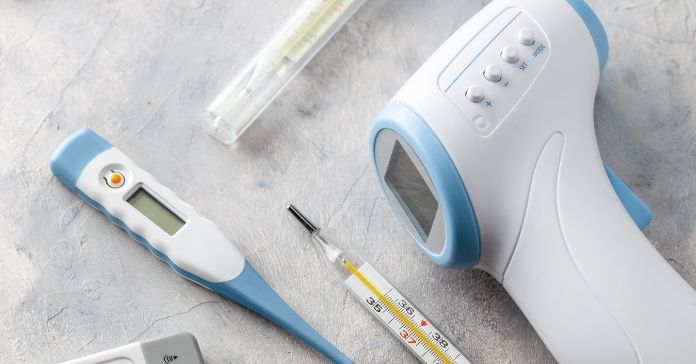
Are you concerned about managing fever or sickness at home? A reliable medical thermometer is one of the top at-home healthcare supplies you should have on hand in your medicine cabinet. Yet, how do you know which one is best for your family, especially with all the options on the market these days?
The type of thermometer you use can make a difference in the accuracy of the results you receive. Learn more in this general guide to understand the different types of medical thermometers.
Clinical Liquid Thermometers
Since their invention, liquid thermometers for clinical purposes have been constructed out of glass tubes and contain bulbs filled with liquid chemical elements. When considering the different types of medical thermometers, it’s important to understand that traditional mercury thermometers are no longer in active circulation. The restriction and ban of these liquid-based thermometers for human use began over a decade ago due to the harmful nature of mercy vapors.
Alternatively, gallium alloy thermometers are liquid thermometers that remain in use. They do not require a power source or calibration, meaning this option ensures operation at all times. These non-toxic analog glass thermometers are easy to use and typically provide precise temperature measurements.
Digital Thermometers
Digital thermometers are now the reasonable standard in the modern healthcare field to measure human body temperature. Digital options rely on metal probes and battery-powered electricity to function and provide faster results than liquid-containing thermometers. These medical devices record the most accurate temperature-taking readings—orally, rectally, or under the armpit— for people of all ages.
Ear or Tympanic Thermometers
The relative ease of tympanic thermometers is the reason for their popularity. This option uses infrared technology to capture human body temperature in the ear canal. The correct placement is essential to provide the most accurate and speedy results. Ear shape, size, or the presence of ear wax can prevent a proper reading.
Forehead or Temporal Thermometers
Forehead thermometers are relatively common and a preferred method for children today. This option has risen in popularity lately due to its non-contact design. Infrared sensors scan and capture the temperature of the temporal artery to provide a reliable result with little disturbance or fuss.
Checking your—or your family’s—temperature at home with a quality medical thermometer can help identify or monitor various illnesses. Some basic options work fine for everyday purposes, while others have fancier features that prove useful in different situations. The choice is up to you and your needs and preferences.







